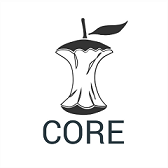Women’s Economic and Social Empowerment in Agricultural Value Chains: Case Study Northern Tanzania
Abstract
Women's empowerment is a complex and multidimensional concept. It is interpreted differently in programs and projects promoting gender equality. This study used qualitative methods to explore the perception of women's empowerment among participants in banana business development initiatives. The study adopted a cross-sectional research design, focus groups, key informant interviews, and case studies as the primary data collection methods. The data were analysed using content analysis. The findings indicate that women perceived female empowerment with a range of social and economic gains, including increased income, greater confidence in speaking, greater awareness of their rights, and greater participation in decision-making processes at family and community levels and behaviours, such as resistance to change and control over women's income, which hinder their empowerment. The study recommends adopting gender-sensitive approaches in the design and implementation of development programs aimed at empowering women. Engaging men and traditional leaders in these initiatives is crucial for shifting mindsets and promoting inclusive gender transformation
Downloads
References
Agarwal, B. (2021). Gender inequality, food security and the COVID-19 crisis. Feminist Economics, 27(1–2), 1–25.
Alliance for a Green Revolution in Africa (AGRA). (2020). Empowering women in African agriculture: The AGRA approach. Alliance for a Green Revolution in Africa.
Alkire, S., Meinzen-Dick, R., Peterman, A., Quisumbing, A., Seymour, G., & Vaz, A. (2013). The Women’s Empowerment in Agriculture Index. World Development, 52, 71–91.
Alkire, S., Meinzen-Dick, R., Peterman, A., Quisumbing, A., Seymour, G., & Vaz, A. (2022). Women’s Empowerment in Agriculture Index (WEAI): Ten Years of Insights and Measurement Innovations. Washington, DC: International Food Policy Research Institute
Baluku, M. M., Matagi, L., Kikooma, J. F., & Otto, K. (2022). Gender disparities and women’s participation in agricultural cooperatives in sub-Saharan Africa. Journal of Co-operative Organization and Management, 10(2), 100164.
Brody, C., de Hoop, T., Vojtkova, M., Warnock, R., Dunbar, M., Murthy, P., & Dworkin, S. L. (2017). Economic self-help group programs for improving women's empowerment: A systematic review. Campbell Systematic Reviews, 13(1), 1–182.
CARE International (2019). Village Savings and Loan Associations (VSLA) impact report. CARE International
Cornwall, A., & Rivas, A. (2015). From ‘gender equality and women’s empowerment’ to global justice: Reclaiming a transformative agenda for gender and development. Third World Quarterly, 36(2), 396–415.
Doss, C., Meinzen-Dick, R., & Quisumbing, A. R. (2023). Women's land rights and agricultural productivity: A review of evidence and pathways. World Development, 163, 106146. Doss, C., Meinzen-Dick, R., Quisumbing, A., & Theis, S. (2021). Women in agriculture: Four myths. Global Food Security, 26, 100373.
Food and Agriculture Organization of the United Nations (FAO). (2021). Promoting inclusive agricultural value chains: Integrating gender perspectives. Food and Agriculture Organization of the United Nations.
Food and Agriculture Organization of the United Nations (FAO) (2021). Rural women’s empowerment: Collective action and gender equality. Food and Agriculture Organization of the United Nations.
Food and Agriculture Organization of the United Nations (FAO)2023). Gender equality and food security in Tanzania: Country gender assessment of the agriculture and rural sector. Food and Agriculture Organization of the United Nations.
Food and Agriculture Organization of the United Nations (FAO). (2023). The status of women in agrifood systems. FAO.
Farnworth, C. R., Sundell, M. F., Nzioki, A., Shivutse, V., & Davis, M. (2018). Transforming gender relations in agriculture in sub-Saharan Africa. Swedish International Agricultural Network Initiative (SIANI) Report.
Golla, A. M., Malhotra, A., Nanda, P., & Mehra, R. (2011). Understanding and measuring women’s economic empowerment: Definition, framework, and indicators. International Center for Research on Women (ICRW)
Hashemi, S. M., Schuler, S. R., & Riley, A. P. (1996). Rural credit programs and women's empowerment in Bangladesh. World Development, 24(4), 635–653.
Ibrahim, S., & Alkire, S. (2007). Agency and empowerment: A proposal for internationally comparable indicators. Oxford Development Studies, 35(4), 379–403.
International Food Policy Research Institute (IFPRI). (2021). Gender Equality and Women’s Empowerment in Food Systems. Washington, DC: IFPRI. Kabeer, N. (1999). Resources, agency, achievements: Reflections on the measurement of women’s empowerment. Development and Change, 30(3), 435–464.
Kabeer, N. (2001). Reflections on the measurement of women’s empowerment – Theory and practice. In Discussing Women’s Empowerment: Theory and Practice. (SIDA Studies No. 3)
Kabeer, N. (2005). Gender equality and women's empowerment: A critical analysis of the third Millennium Development Goal. Gender & Development, 13(1), 13–24.
Kabeer, N. (2015). Gender, labour, and the transformative power of social protection: Reflections on South Asia. UNRISD Working Paper 2015-2.
Kabeer, N. (2015). Gender, poverty, and inequality: A brief history of feminist contributions in the field of international development. Gender & Development, 23(2), 189–205.
Kileo, S. K., & Mvena, Z. S. K. (2022). Enhancing banana productivity among women farmers through participatory agricultural extension approaches in Kilimanjaro Region, Tanzania. Tanzania Journal of Agricultural Sciences, 21(3), 44–55.
Kiwango, M. E., Kaaya, A., & Massawe, R. (2023). Opportunities and barriers for scaling improved banana varieties in Northern Tanzania. African Journal of Horticultural Science, 25(1), 67–78.
Kothari, C. R. (2004). Research Methodology: Methods and Techniques (2nd ed.). New Delhi: New Age International Publishers.
Malhotra, A., Schuler, S. R., & Boender, C. (2002). Measuring women's empowerment as a variable in international development. Background paper prepared for the World Bank Workshop on Poverty and Gender: New Perspectives.
Malhotra, A., Schuler, S. R., & Boender, C. (2002). Measuring women’s empowerment as a variable in international development. World Bank
Mayoux, L. (2000). Micro-finance and the empowerment of women: A review of the key issues. (ILO Working Paper No. 23) International Labour Organization.
Mayoux, L. (2001). Tackling the down side: Social capital, women’s empowerment and micro-finance in Cameroon. Development and Change, 32(3), 435–464.
Mayoux, L. (2010). Reaching and empowering women: Gender mainstreaming in rural microfinance. International Fund for Agricultural Development (IFAD).
Mbilinyi, D., Temu, A. E., & Lupindu, A. M. (2021). Gender norms and resistance to women’s empowerment in rural Tanzania. Tanzania Journal of Development Studies, 19(2), 87–105.
Meinzen-Dick, R., Quisumbing, A., Behrman, J., Biermayr-Jenzano, P., Wilde, V., Noordeloos, M., Ragasa, C., & Beintema, N. (2019). Engendering agricultural research, development and extension: Gender-responsiveness in agricultural research for development. International Food Policy Research Institute (IFPRI).
Mosedale, S. (2005). Assessing women's empowerment: Towards a conceptual framework. Journal of International Development, 17(2), 243–257.
Mwangi, E., & Oduor, C. (2022). Transforming gender roles in rural households: Lessons from Kenya and Tanzania. Journal of Gender and Development in Africa, 3(1), 33–49.
Mwangi, M., Mbogo, M., & Ngowi, B. (2022). Gender dynamics in smallholder banana farming systems in Northern Tanzania. Journal of Agricultural and Rural Development in the Tropics and Subtropics, 123(2), 145–158.
Njuki, J., Baltenweck, I., Mutua, E., Korir, L., & Muindi, P. (2023). Strengthening women’s access to productive assets and markets in agricultural value chains: Evidence from East Africa. Journal of Gender, Agriculture and Food Security, 8(2), 44–60.
Njuki, J., Kaaria, S., Chamunorwa, A., & Chiuri, W. (2011). Linking smallholder farmers to markets, gender and intra-household dynamics: Does the choice of commodity matter? European Journal of Development Research, 23(3), 426–443.
Novel, N. A., Dahalan, D., & Abdullah, H. (2011). The effectiveness of community development programs in rural communities. Asian Social Science, 7(6), 92–97.
Ragasa, C., Aberman, N. L., & Alvarez-Mingote, C. (2019). Does providing agricultural and nutrition information to both men and women improve household practices? Evidence from Malawi. Global Food Security, 20, 45–59.
Rashidpour, L., Khodamoradi, F., & Esmaeili, S. (2010). Evaluation of the impact of rural development projects on women's empowerment. Journal of Agricultural Extension and Rural Development, 2(12), 219–225.
Samah, A. A., Shaffril, H. A. M., Hassan, M. A., & D’Silva, J. L. (2011). Can community development initiatives help rural women in developing countries? Women’s Studies International Forum, 34(6), 480–489.
Simvised, A., Shukur, S., & Muflihi, M. (2008). Community participation in development projects: Empowering communities for sustainable development. Institute for Development Studies.
Swain, R. B., & Wallentin, F. Y. (2009). Does microfinance empower women? Evidence from self-help groups in India. International Review of Applied Economics, 23(5), 541–556.
Tanzania Social Action Fund (TASAF) (2022). Tanzania Social Action Fund (TASAF) Phase III Progress Report. United Republic of Tanzania
United Republic of Tanzania (URT). (2006). National Strategy for Gender Development. Ministry of Community Development, Gender and Children.
United Republic of Tanzania (URT). (2021). Agricultural Sector Development Programme Phase II (ASDP II) Annual Report.
United Republic of Tanzania (URT). (2022). Gender Profile of Agriculture in Tanzania. Ministry of Agriculture.
United Republic of Tanzania (URT). (2023). Agricultural Sector Performance Report 2022/2023. Ministry of Agriculture, Dodoma.
United States Agency for International Development (USAID). (2021). Feed the Future Tanzania annual report FY2020.
Vyas, S., & Watts, C. (2009). How does economic empowerment affect women's risk of intimate partner violence in low and middle-income countries? A systematic review of published evidence. Journal of International Development, 21(5), 577–602.
World Bank. (2002). Empowerment and poverty reduction: A sourcebook. World Bank
World Bank. (2022). Gender and Development Report: Breaking the constraints to gender equality. World Bank Group.
World Bank. (2022). Gender equality and development. World Bank.
World Bank. (2023). Women, business and the law 2023. The World Bank.
Copyright (c) 2025 Anande Erasto Kweka

This work is licensed under a Creative Commons Attribution 4.0 International License.




























